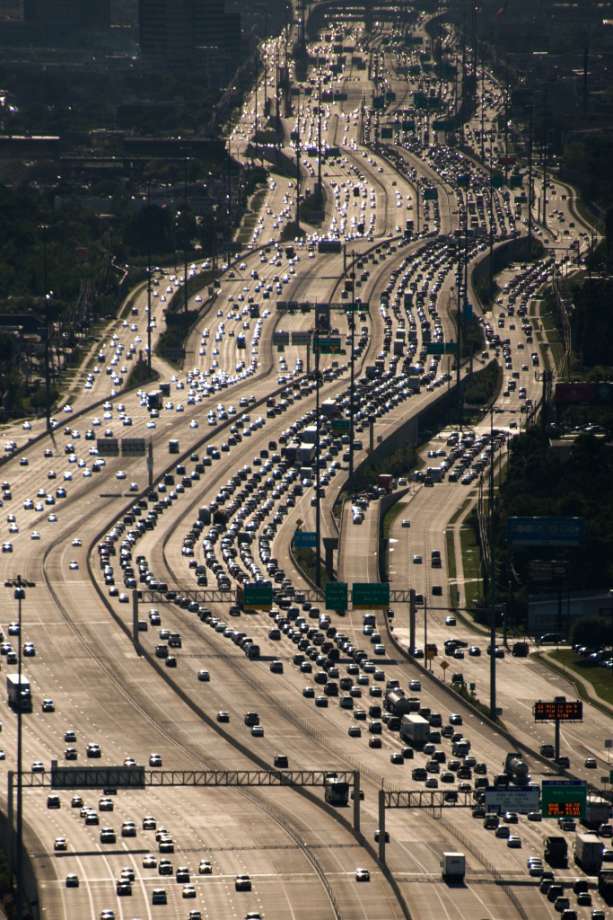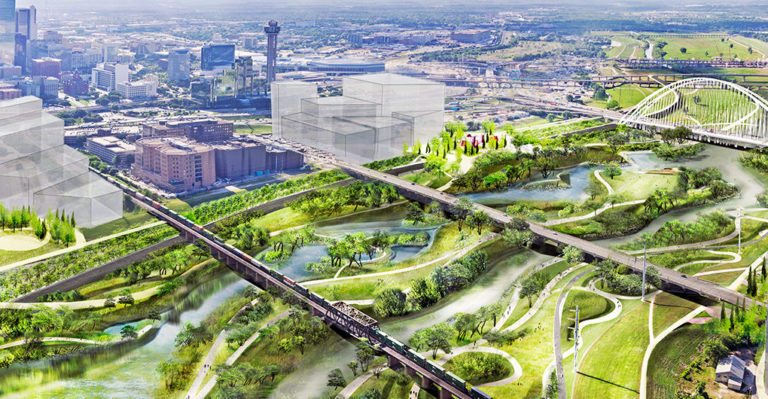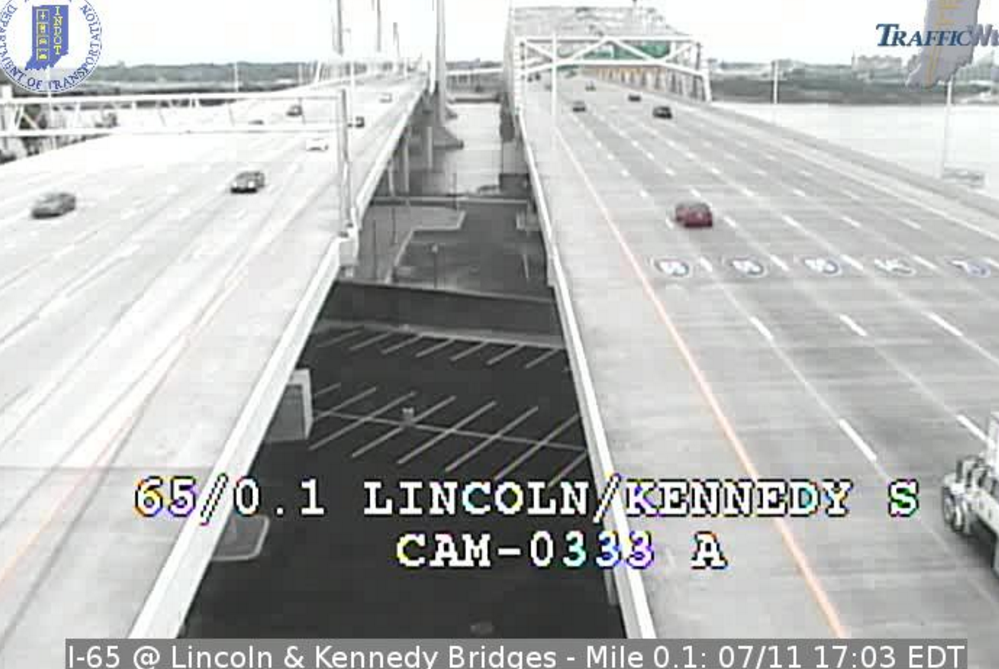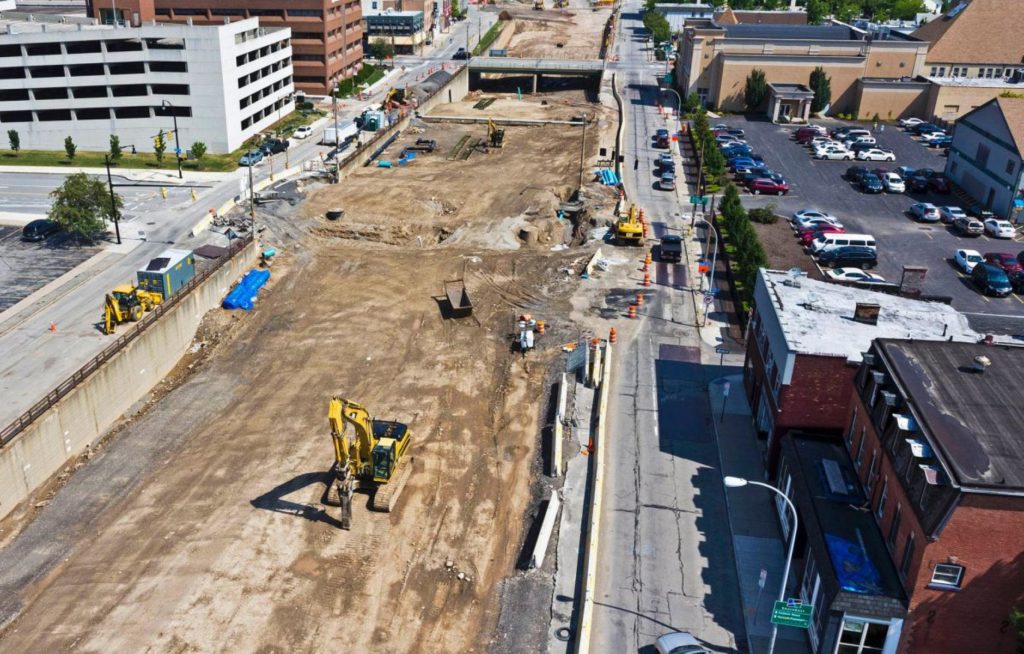Portland is thinking about widening freeways; other cities show that doesn’t work
Once upon a time, Portland held itself out as a national example of how to build cities that didn’t revolve (so much) around the private automobile. Back in the 1960s and 1970s, it recognized that building more freeways just generated more traffic, and it tore out one downtown freeway, and cancelled another, and instead took the bold step of investing in transit and encouraging greater urban density.
But now the region is confronted with proposals to spend upwards of a billion dollars on three freeway widening projects. The idea that widening freeways will reduce congestion has been thoroughly debunked. Economists now talk about the “Fundamental Law of Road Congestion“–each incremental increase in highway capacity generates a proportionate increase in traffic, with the effect that congestion quickly rebounds to previous levels–accompanied by more sprawl, longer trips and increased pollution. As it contemplates spending upwards of a billion dollars on three proposed freeway-widening projects, Portland might want to spend a little time looking at what’s been learned in other cities around the country. The experiences of four cities confirm the lessons that Portland thought it learned four decades ago.
Houston
Add as many lanes as you like, you’ll just get more traffic and congestion

America’s largest freeway is Houston’s 23-lane Katy Freeway. Its been widened many times, always, ostensibly with the idea of eliminating congestion. But no matter how wide it gets, added capacity just induces further flung development and more peak hour driving, with the result that the freeway is even slower today than it was when it was widened just a few years ago. Texas spent $2.3 billion to widen the road, but just 3 years after in opened, the morning commute has increased by 25 minutes (or 30 percent) and the afternoon commute has increased by 23 minutes (or 55 percent). It’s just one of many examples of how expanding freeway capacity to fight congestion is simply futile.
Dallas
Even in the Lone Star State, they’re willing to cancel big road projects

For decades, Portland has prided itself on its 1970s era decision to tear out one freeway (Harbor Drive) and to forego building another one (the Mount Hood Freeway). Meanwhile, in much of the Sunbelt, cities like Houston built more and wider freeways. But even in Texas, the tide is turning. Just this month, the City of Dallas junked decades old plans to build a six-lane tollway to relieve downtown traffic congestion. Called the Trinity Parkway, the billion dollar road would have been built in the floodway of the long-neglected Trinity River that flows in and near downtown Dallas. For years, the project has moved forward with a steady, and familiar refrain:
Supporters of the road have long said it is crucial to relieving daily congestion on the knot of highways surrounding downtown.
But earlier this month, the Dallas City Council voted 13-2 to cancel the tollway. Instead, the Trinity River floodplain will be developed as a park. Kinda like what Portland did with its waterfront four decades ago.
Louisville
If you widen first, and toll later, you’ll waste millions or billions
One aspect of Louisville, Kentucky’s transportation system looks a lot like Portland’s. Louisville lies just south of the Ohio River, and every day, tens of thousands of suburban Hoosiers use the interstate freeway to commute to jobs in Louisville, mostly on the I-65 bridge. (In Portland, it’s tens of thousands of Washingtonians crossing the Columbia River, principally on Interstate 5, to jobs in Oregon). Until a couple of years ago, the I-65 river crossing, like I-5, consisted of six travel lanes. Six months ago, Kentucky and Indiana completed a billion dollar freeway widening project that expands I-65 to twelve lanes (by twinning the existing Ohio River bridge). To help pay for the new bridge, the state’s started charging a toll that averages about $2 (with big discounts for regular commuters). The result: despite doubling capacity, the number of people using the I-65 crossing has fallen by almost half. Now the new super-sized river crossing is grossly under-used, even at rush hour.

If Louisville had tolled the river crossing before committing to constructing additional capacity, it would have realized it didn’t need anything like 12 lanes over the Ohio River–the existing bridges would have sufficed.
In Oregon’s case, the Legislature has directed the Oregon Department of Transportation to get federal permission to toll Interstate 5 and a parallel route (I-205). Given Kentucky and Indiana’s experience, it would be wise to implement tolls first, before making any additions to existing freeway capacity. The overwhelming evidence is that tolling could reduce, delay or even eliminate the need for costly freeway widening.
Rochester
Tearing out a freeway makes a better city.

Rochester, New York is in the process of removing and filling in a depressed (and depressing) urban freeway it built in the 1960s. Removing the “Inner Loop” freeway is reconnecting downtown neighborhoods, and helping stimulate development. The city has just approved a new mixed use development on former freeway land that includes 120 units of housing. More housing and fewer roads are the cornerstones of revitalizing the city’s downtown, according to the Congress for the New Urbanism.
Lessons learned?
Looking at the experience of other cities should tell Portland’s leaders that freeway widening projects like the proposed Rose Quarter expansion are ineffective, costly, unnecessary, and out of date. Houston’s experience shows that adding more lanes doesn’t reduce congestion, it just induces more traffic. Louisville shows that if you’re going to toll freeways, you can expect a big drop in traffic that will likely obviate any perceived need for more lanes. And Dallas shows, than even in traditional auto-dominated cities, its possible to simply walk away from out-dated freeway expansions plans. For those who are really serious about reclaiming valuable urban space for people, it makes sense to tear out freeways, as Rochester is currently doing, rather than building more. Portland was once a leader in re-thinking how to reduce auto-dependence; today, there are valuable lessons it can learn from other cities.
